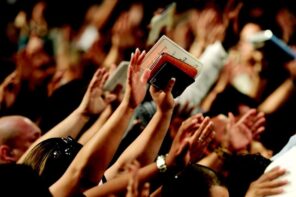One of the last books the Catholic mystic, social activist, poet, and Trappist monk Thomas Merton read just before his tragic death in Bangkok, Thailand on December 10, 1968, was Final Integration in the Adult Personality (1965, E.J. Brill). Written by the Iranian-born psychologist A. Reza Arasteh, the central premise of the book is that in order for a person to reach final integration of the adult personality, she or he must grow beyond their native culture and religious tradition.
In a subsequent book published twelve years after Merton’s death, Growth to Selfhood (1980, Routledge), Arasteh further develops this central idea making the paradoxical argument: that the means by which one outgrows or moves beyond the limiting worldview of one’s native religious tradition is through the practice of the religious tradition itself.
Two questions I have spent a lot of time thinking about over the last number of years is what form, structure, and expression the phenomenon we call “religion” will take in the future (that is, if “religion” is then still labeled as such); or, conversely, is there a future for religion (specifically formal, organized, institutionalized religion as we presently recognize it) in a rapidly globalizing, postindustrial and postmodern world?
Back in the 1960s, sociologists predicted that the advancement of science and technology would usher in a secular worldview and that religion would eventually fade into the past. Or if it did manage to survive, they imagined, religion would become the purview of a small segment of the population that, kicking and screaming, has refused to enter into the contemporary world.
Of course, we now know that the sociologists were wrong. Religion, it seems, is here to stay. Rather than fade into oblivion or become a private matter, religion is front and center in the new millennium, especially since the tragic events of September 11, 2001.
Still, while it isn’t going away any time soon, it is also true that if we humans are going to collectively survive and flourish living in the information age of a globalized world, our understanding and practice of religion will have to change. While we can’t know for certain what shape or form religion will take in the future, I am willing to speculate. Fortunately, there are some trends and patterns that support my speculations so they are not simply spun out of thin air.
If the recent surveys, “Faith in Flux: Changes in Religious Affiliation in the U.S.” (2009), and the “2008 American Religious Identification Survey (ARIS),” are any indication, the process Arasteh described in his two books may be an experience common to a growing number of Americans. As the surveys suggest, this process of growing beyond one’s inherited religious tradition has become far more prevalent, sometimes spanning generations. Referred to as the “Nones,” these are people who identify themselves as unaffiliated with any kind of organized religion and are happy to be so. However, this does not mean that Nones have no interest in spirituality, prayer, meditation, or ritual; all areas traditionally associated with “religion.”
In my work as a teacher and speaker, I encounter more and more people who identify themselves as “spiritual but not religious.” I especially encounter this among my students in the Catholic University where I teach and where the majority of the students are, like me, Roman Catholic by heritage. But it’s not just students or young people who identify themselves in this way. In my travels, I meet people of all ages, colors, genders, and sexual orientations (or no gender or sexual orientation at all) who also describe themselves as “spiritual but not religious.”
What exactly does this category of self-identity mean? Perhaps anthropology can offer some clues. Anthropologists of religion recognize that there is a universal human capacity to wonder at the mysteries of life and death, and a need to make sense of or find meaning in the strange circumstances we find ourselves in. Drawing on the insights of the anthropology of religion, it seems it is universally common for human beings to strive to make meaning of the mysteries of birth, life, death, and the cosmos; that there is, in fact, a part of us which is hardwired to be “spiritual,” for lack of a better word. I suspect, too, that it is out of this hardwired capacity for the spiritual that human beings throughout history have created the myriad and diverse religious traditions which are the source of some of the best and worst of human behavior, both individually and collectively.
As a result of the globalization process and the information technology that facilitates it, with the click of a mouse or the touch of an iPhone screen we humans can instantly access information about these myriad religious traditions and their attendant practices. This may actually make it possible for us to distinguish between our hardwired capacity for the spiritual and the religious traditions and practices that are produced from it as all the conflicting and diverse information makes it exceedingly difficult to sustain a worldview drawn from just one religious tradition.
If the “Nones” are a rapidly growing category (as the surveys suggest), then “religion” will need to change in order to remain relevant and viable in the complex world we’re heading into. To begin with, the idea that only one religion is true, while all the others are not, will have to be abandoned. Perhaps one way of hastening this process is to think of religion as being like language. Languages are not true or false. Rather, each different language seeks to express the shared history and life experiences of those people who speak it. In a rapidly globalizing world, people will increasingly need to be fluent in more than one language.
Likewise, it will become necessary to speak more than one religious language; not just for the sake of communication, but in service of human spiritual growth and enrichment. Using myself as an example might work like this: my native language is Christianity. My native dialect of Christianity is Roman Catholic. However, I also speak Eastern Orthodox, Episcopalian, and Quaker dialects of Christianity with considerable fluency. I speak other religious languages too. In the language of Islam I speak the Sufi dialect; in the Buddhist language I speak Zen and Vajrayana dialects. I also speak various African Diasporic languages such as Haitian Vodou, Cuban Santeria, and Brazilian Candomble. Being able to speak each of these languages does not deny the validity of my own native religious language and dialect, but rather enriches my capacity to communicate with others who may speak a different religious language; providing me with even more tools for making sense and meaning out of the human predicament.
The next feature we’re likely to see in the future is a continuation of the fluid boundaries between religious traditions documented in these surveys. This is true not only about beliefs but also about practices. Here is (perhaps with a contemporary twist) what Arasteh meant when he claimed that the way one grows beyond the limits of one particular tradition is through the practice of that tradition. Increasingly, the practice of religious bricolage is a feature of today’s contemporary religious landscape. It is quite common for people to have what some scholars refer to as Multiple Religious Allegiances (MRAs). MRAs are a feature of many Asian and African religious traditions, and have been so for centuries; so in essence what I am describing is not new even if it may be a challenge to adherents of the Abrahamic traditions.
Next, the religious landscape of the future is likely to see a greater capacity for ambiguity. Along with globalization and rapid technological advancement comes increasing complexity, as theorists Ervin Laszlo and Edgar Morin have pointed out. As a result of this complexity the human capacity for spirituality can no longer be met now or in the future by a one-size-fits-all approach to religion. The Jesuit paleontologist and theologian, Pierre Teilhard de Chardin (1881-1955) knew this and, in his numerous works on religion, described the process as “complexification” (see especially The Future of Man).
When I ask Nones why they identify themselves as spiritual but not religious, many say it is because while most religions claim to teach peace, love, compassion, and the unity of humankind, the violent history that is their heritage (my own Roman Catholic tradition included) does not bear witness to these claims. As a result, many Nones seek to distance themselves from what they perceive as the hypocrisy and violence promulgated by formal religion. This is especially the case when it comes to matters of sexual morality and the treatment and role of women and lesbian, gay, bisexual, and transgender persons by organized religion. Another common refrain is a distrust of authority, especially when it comes to the doctrinal and dogmatic claims of organized religion, claims that cannot easily be measured or verified in any tangible way.
Part of the problem here, I believe, is that religious authorities, unable to appreciate the value of metaphor, allegory and symbol, insist on literal and historicist interpretations of doctrine and dogma. For example, within my own tradition as much as I marvel at the doctrine of the Holy Trinity, I simply have no personal experience of One God in Three Distinct Persons, even though I spend a great deal of time meditating on the Trinity in my own personal spiritual life. As one Catholic priest friend recently put it, “The Trinity. That was a fourth-century answer to a fourth-century problem.”
I have no doubt those Nones who share my Catholic heritage would agree with this. Similarly, I imagine those Nones who hail from other traditions would feel the same about the dogmatic and doctrinal claims of their own respective native religious tradition. Thus a fourth feature of religion in the future, if it is to survive, will be increasingly metaphorical, allegorical, and symbolic interpretations of doctrines and dogmas; no matter what the tradition may be.
Along with all of the above, we have simultaneously witnessed the rise in fundamentalist religion—the literal and historicist interpretation of sacred texts, and the dogmas and doctrines they propound. I interpret this rise in fundamentalist religion (which, I am sorry to report, is also likely to stick around) as a reaction to the great uncertainty produced by rapid globalization and technological advancement; a response to the incredible imbalance and abuse of power in the world, and the unequal distribution of this world’s resources. Still, I remain optimistic. For if we are going to be able to live peacefully and productively in an increasingly complex world that puts us more intimately in touch than ever before, these are some of the critical ways that religion will have to change. After all, it does appear to be here to stay.




